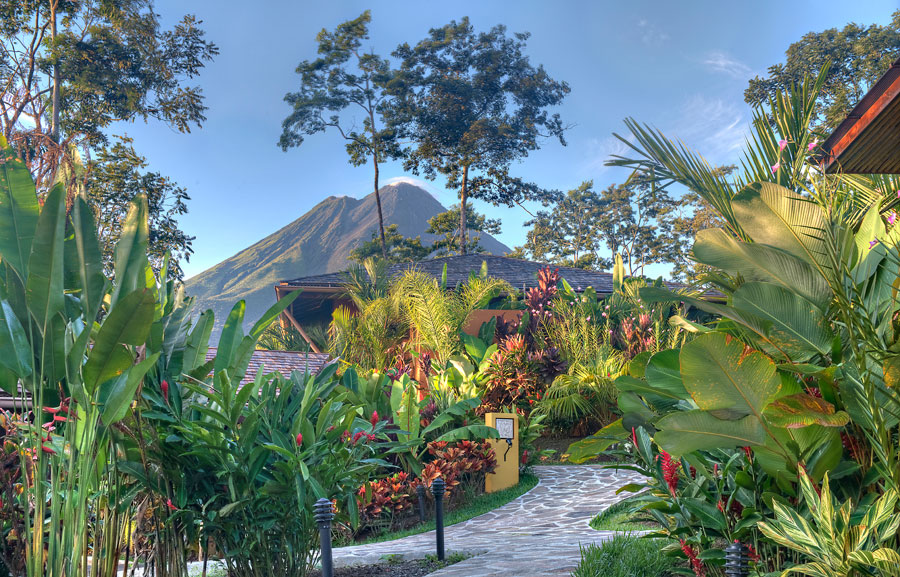
Somewhere on a plantation in a Costa Rican rainforest is a coffee tree sapling with my name – or rather, my husband’s nickname for me – on it. I know because I planted it. Arbie may not be producing beans for three years but once it starts, it will produce for 40 years, long after I’m no longer enjoying the beverage. North Fields tour guide Leonel Gamboa Aguilar holds the umbrella as I pack my young plant into a hole in the rich volcanic soil on the small family-run plantation in La Fortuna de San Carlos. Even though we’re in the dry season (November to April), it’s raining cats and dogs – just not as hard, I’m told, as it would during the rainy season. Leonel takes our picture for posterity and offers up “Pura vida” – direct translation is pure life, clean life, but in Costa Rica, it’s a greeting, an acknowledgement, a way of life.
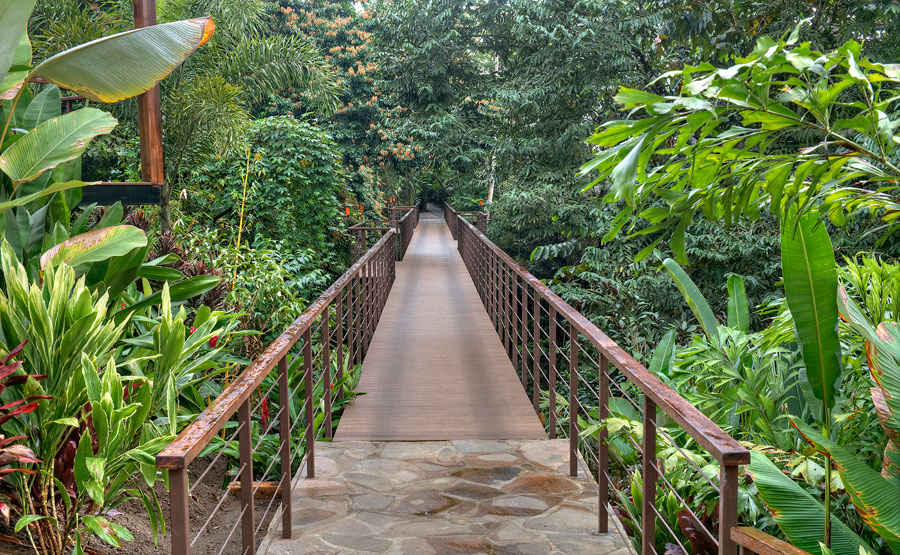
My home base for my few days in Costa Rica is equidistant from Liberia in the northwest and the country’s capital of San José to the southeast, both hosting international airports. Nayara Springs in the Arenal Volcano National Park has been named the No. 1 resort in Central and South America (Condé Nast Traveler) and the No. 1 luxury hotel in the world (Trip Advisor 2016).
Arriving in the dark after a three-hour trip from the airport, I’m grateful for the golf cart driver who takes me through a bewildering maze of pathways and over a rainforest ravine to the 35 adult-only villas built above the 35 bungalows of the family-friendly Nayara Resort. The golf carts, I would learn, are more common here than yellow cabs in New York City and willing to take you anywhere on the resort you want to go.
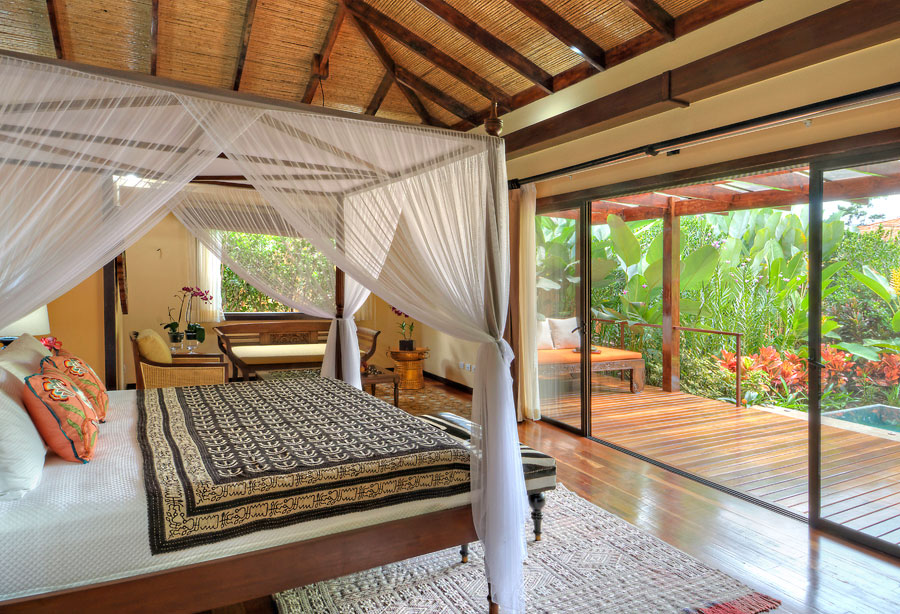
After settling into my 1,500-square foot villa, I grab one of the ubiquitous orange umbrellas from the stand by the front door and run through the rain to the cart that’s taking me to dinner at Asia Luna with its Peruvian-Asian fusion menu, one of six restaurants on site, knowing I would never find my way until I explored the grounds in daylight.
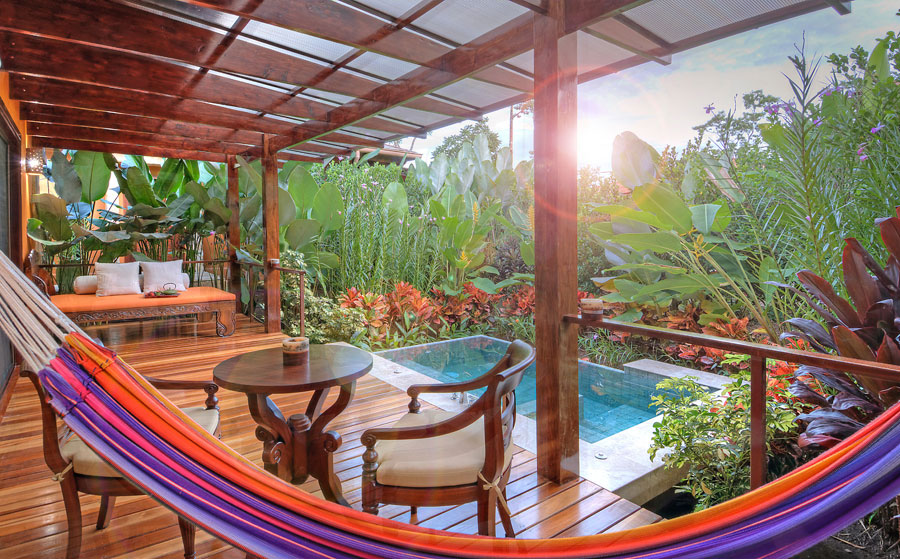
After dinner, I can’t wait to return to my room and jump into my private plunge pool fed by mineral hot springs and surrounded by lush primeval vegetation. It all makes up for the lengthy trek to get here. The cacophony of frogs singing late into the night doesn’t disturb my slumber in the mosquito-netted four-poster.
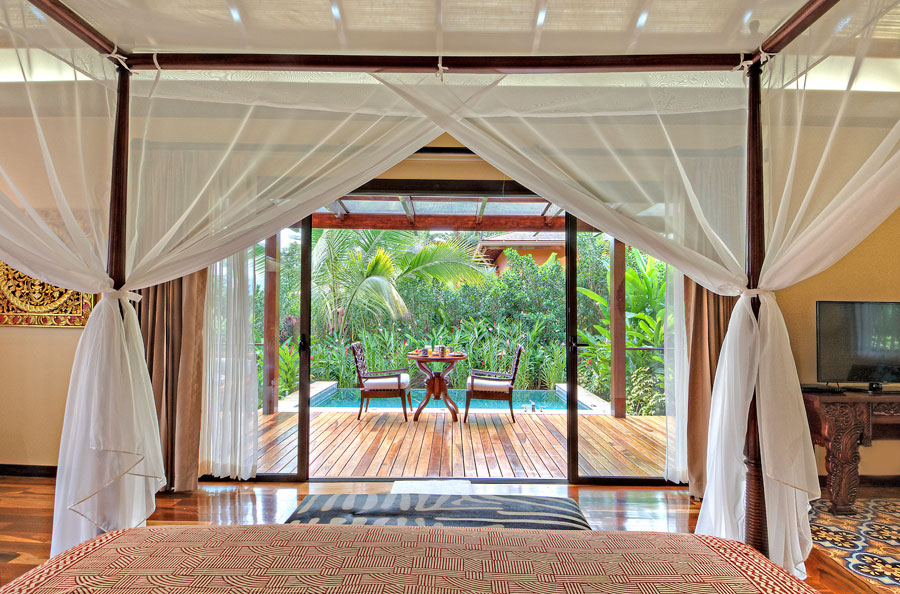
I wake up early to have breakfast on my deck before joining the bird-watching tour. Resort map in hand, I make only a few wrong turns before meeting up with Juan Pablo. With tripod and binoculars, Juan first picks up on a small flock of noisy but colourful toucans, a red-lored parrot, a masked tityra, a broad-winged hawk, a great kiskadee flycatcher and a scaly-breasted hummingbird – only one of 54 hummingbird species in the country.
All that within an hour, and all on the property. It’s a twitcher’s dream – perfect for those birders who are willing to travel great distances to cross unseen birds off their list. While I enjoy watching birds, the frog-hunting expedition that evening was more in my line. With more than 100 kinds of frogs in the rainforest, I want to identify some of the amphibians that entertain me with their songs during the night.
Again, on a golf cart with our guide Estebon Ocampo, we set off to travel the paths, stopping at ponds and fountains where red-eyed tree frogs are comic delights and miniscule glass frogs of translucent green with huge toe pads cling to the leaves as they cheep into the night. None looks like they can produce the volume of noise I hear through my open doors at night.
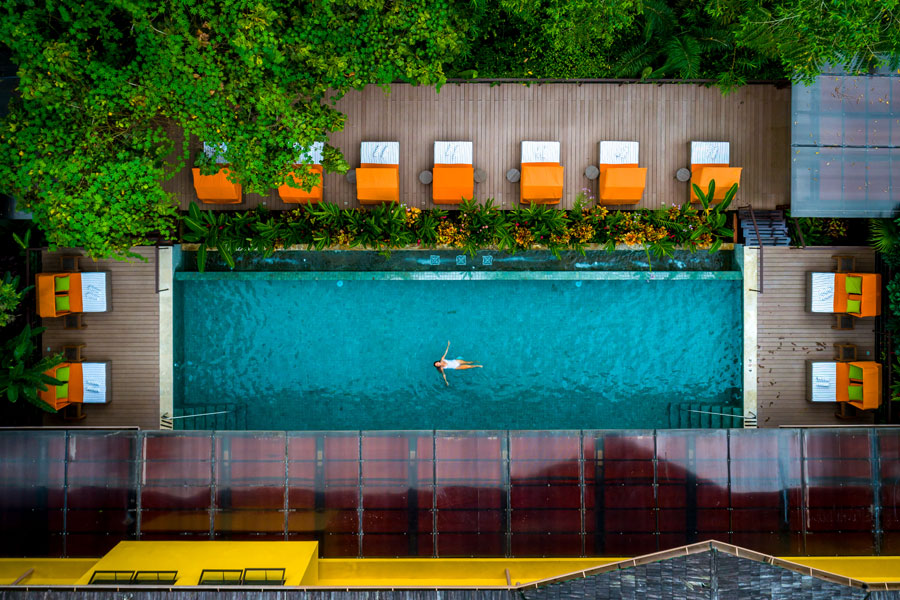
Estebon points out a sloth in guarumo tree – Ticos, or locals, are accustomed to seeing these slow-moving mammals as the country is home to the largest number of them in Central America – and as I turn to see it, my iPad slips off my lap, hits the side of the golf cart, ricochets off the bridge and into the ravine. My stomach sinks, but Estebon, peering over the rail, is confident it didn’t fall into the creek. Even as I describe it – a mini iPad in a black cover – I know it’s gone, fallen into the dark green vegetation below. I head off to drown my sorrows in an incredible five-course wine-paired dinner at Nostalgia.
Somewhere between the second and third course, I see Estebon striding into the restaurant, catching my eye as he waves my iPad over his head. He and his friends ploughed through the vegetation of the ravine in the dark for the rescue. Pura vida indeed.
This story was originally published online on Feb. 8, 2018
RELATED READS:
